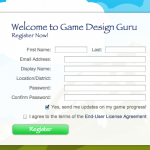Learning Game Design: Think About the Learning and Then the Game

I am a firm believer that most games teach. However, not all games are explicitly designed to be learning games. If your intention is to create a learning game that achieves specific learning outcomes for the players, then you have to think about the learning before you begin crafting the game design.
It’s critical to have a strong understanding of game goals, core dynamics, game mechanics, and game elements—but that understanding doesn’t guarantee you a learning game if you don’t also have solid instructional design skills. Why? Because an effective learning game requires a solid instructional goal and learning objectives, as well as a clear understanding of the backgrounds and preferences of the target audience for the game.
The phrase “learning game” says it all—you are creating games that help people learn. What distinguishes a serious game from a commercial game is its intention to help people learn something specific. Players will either know something or be able to do something as a result of playing the game. In many instances, there may be attitudinal adjustments you’re seeking as well.
Questions You Need to Answer Before Designing Any Game
As part of our Play to Learn book, Karl Kapp and I put together a checklist of questions learning game designers need to answer before starting on game design. Here are the questions, which are pretty straightforward needs analysis kind of stuff:
What is the business need that is driving the use of a learning game?
- A need to increase sales or to support the launch of a new product?
- Customer complaints or ineffective customer service?
- A need to comply with gov’t regs?
- Quality issues?
- Safety issues?
- A need to build knowledge or skill on a business-critical process?
- Something else? What is it?
After playing this game, what will learners be able to do in their jobs? (This should be your instructional goal).
- As part of achieving the instructional goal, what do learners need to know, do, and believe? (These statements convert into your game’s learning objectives.)




